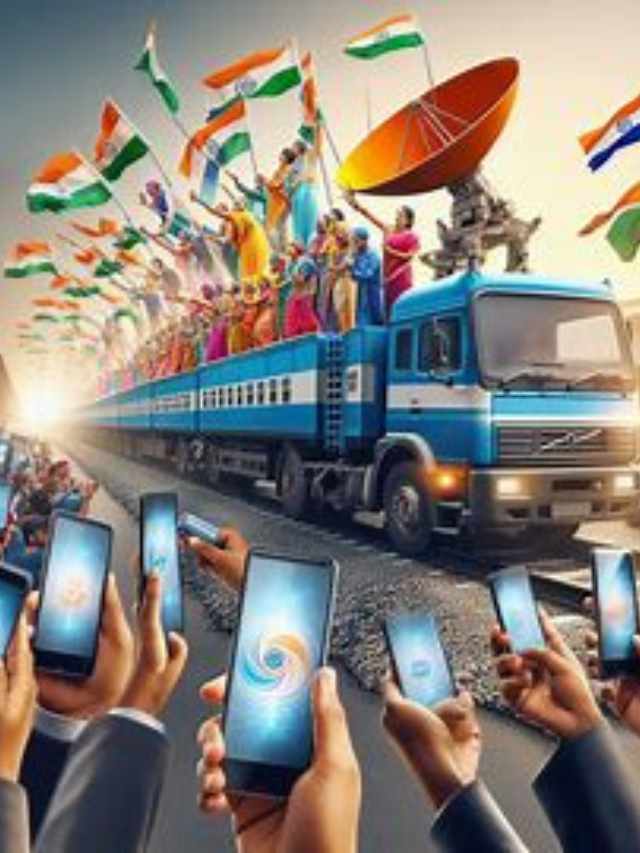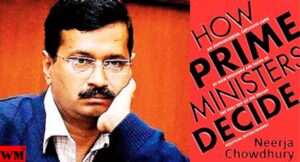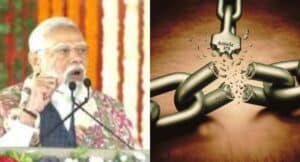{d2m technology, how does the d2m technology work, direct to mobile broadcasting, d2m tv technology, sim free smartphone tv, India emerging technologies, digital India initiatives, 5g and broadcasting convergence, direct to mobile Technology }

D2M Technology Revolutions
The Indian government is accelerating trials of an innovative direct-to-mobile (D2M) broadcasting technology that will enable viewers to seamlessly watch live TV channels on smartphones without needing an internet connection or even inserting a SIM card. This homegrown platform aims to transform content delivery by tapping broadcast networks more efficiently instead of relying solely on cellular infrastructure.
What is D2M Technology
Direct-to-mobile broadcasting refers to the transmission of multimedia content such as live video streams directly to compatible mobile devices through dedicated networks using radio frequencies, bypassing the internet. It facilitates the delivery of real-time broadcasts along with on-demand media to phones sans mobile data connectivity, SIM cards or straining cellular capacity.
How does the D2M Technology work?
The direct-to-mobile platform architecture resembles traditional FM radio broadcasting fundamentals. Instead of smartphones receiving signals encoded over mobile internet data, separate broadcast networks are leveraged and paired with calibrated transmission stations.
D2M Technology-enabled handsets are equipped with compatible antenna and radio components allowing signal tuning/decoding in the designated transmission frequency ranges. The multimedia content gets decoded and rendered on the device interface without needing internet data packet reception like online video streaming depends on.
So users can directly latch onto these over-the-air d2m signals for accessing media broadcasts streamed over the network natively. It consumes zero mobile internet bandwidth while unlocking rich media functionality spanning live, linear and interactive channels.

The Scale of Ongoing D2M Technology Broadcasting Pilot Trials
Direct-to-mobile functionality trials are currently underway across three pilot locations – Bengaluru, Delhi and Noida in association with state broadcaster Prasar Bharti and partners like Jio, CSC along others. Another 19 Tier I cities have been identified for expanded D2M Technology pilot testing during 2024.
The open standards for the network are being formulated by Broadcast Engineering Consultants India Ltd.(BECIL) who are spearheading the technology implementation. Extensive R&D continues on designing specialized antennae and hardware for mass adoption alongside examining frequency bands like 526-582 MHz for commercial viability.
Working prototypes have already proven D2M Technology broadcast capability to stream multimedia seamlessly to mobile devices. But intensive field demos continue to evaluate reception consistency, security safeguards and receiver hardware upgrades required to equip commercial smartphones with smooth D2M Technology compatibility.
Cost Analysis of Onboarding Phones to D2M
Since regular 4G+5G Android smartphones lack the inbuilt infrastructure to tap into direct broadcasts, they need some hardware/software modifications for D2M reception capability:
- Dedicated RF chip layer for baseband D2M signal processing
- Antenna plus amplifiers for tuning into allocated frequency bands
- Software upgrades to extract and decode multimedia stream
As per government estimates, the production cost increase to enable D2M broadcast reception is minimal ranging between ₹200-300 at scale. This augurs well for rapid feature adoption across entry-level phones & eventual public broadcasting decode chipsets down the line.
Leading homegrown phone makers like Lava, and Micromax can drive the D2M hardware integration with suitable incentives. Prasar Bharati is also examining fiscal development mechanisms allowing citizens tax rebates or subsidized devices bundling D2M at negligible incremental costs to drive faster public adoption.

Strategic Impact of Direct Broadcast Transition
Transitioning from internet-based content streaming to direct over-the-air (D2M Technology) broadcast reception fundamentally impacts multiple fronts:
1. Cuts Cellular Traffic: Direct multimedia access via dedicated networks bypassing mobile internet helps massively decongest India’s already cramped mobile networks. This comes at a time when India positions itself as the world’s largest mobile data consumer amidst accelerated 5G rollout yet facing right-of-way roadblocks for fibre infrastructure expansion across states. Broadcasting linear TV directly provides immense cellular bandwidth savings especially in congested areas and during mass events like festivals or sports.
2. Saves Consumer Data: For audiences, watching real-time shows to location-specific alerts becomes possible without eating the phone’s mobile data. This brings special relief for poorer or remote users with limited access to cellular plans due to affordability or connectivity barriers. Students can receive public education broadcasts without data recharges or schooling getting interrupted.
3. Spurs Govtech Innovation: The robustness of the D2M Technology backbone allows planners to drive pathbreaking digital governance solutions targeting internet-deprived regions by penetrating the last mile leveraging broadcast networks’ extensive reach. Be it advisory services for farmers, financial literacy for women self-help groups or telemedicine modules – countless use cases emerge.
As India doubles down on self-reliance and strategic autonomy in telecom gear, steering the D2M Technology value chain natively from patents to products also significantly bolsters overall digital sovereignty. Localization lessens security vulnerabilities apart from fueling innovation tailored to national needs.

What Next for D2M Broadcasting Rollout?
While the commercialization roadmap remains fluid, Prasar Bharati envisages phased city-wise D2M capability expansion in the short term before evaluating the feasibility of India-wide integration.
Extensive testing continues to finetune transmission power levels, mobile device compatibility and receiver hardware ergonomics while formulating scalable adoption frameworks aligned to 5G infrastructure expansion.
Positive results so far strongest validate India’s capability to drive technological leapfrogging merging telecom and broadcasting – unlocking convergence at scale to shape digital experiences serving Bharat’s needs.
Through pioneering direct-to-mobile broadcasting strides, India takes a significant leap to merge telecom networks with broadcast channels – transforming how on-the-go video and media interaction happens looking ahead.

FAQs
Q1. How does D2M technology work?
A1. D2M Technology or direct-to-mobile broadcasting allows the transmission of live media streams to smartphones via dedicated broadcast networks instead of mobile internet. D2M-enabled phones can decode these signals without SIM or data usage.
Q2. What are the benefits of direct-to-mobile TV broadcasting?
A2. Major benefits are zero internet data usage, the ability to receive broadcasts without SIM cards, reduced cellular traffic through network convergence, location-specific alerts reach and more efficient delivery architecture than OTT streaming.
Q3. Which cities have ongoing D2M trials in India?
A3. Current D2M Technology pilot testing locations comprise Bengaluru, Delhi and Noida. 19 additional tier I cities are to be included in the expansion roadmap as per the Ministry of Information & Broadcasting.
Q4. When will D2M broadcasting be commercially launched in India?
A4. The full commercialization timeline is unclear although working prototypes have proven viability through field testing. Phased rollout expected to priority regions before evaluating feasibility for country-wide D2M Technology integration.
Q5. How can mobiles be upgraded to support D2M signal reception?
A5. Smartphones would need additional RF processing chip layers, supporting antenna and tuner components along with decoder software upgrades for integrating direct broadcast reception abilities.
Q6. What frequency band is being used for D2M transmissions in India?
A6. During pilot testing, the band of 526-582 MHz spectrum is being utilized for beaming trial D2M broadcasts. Commercial utilization bands are under feasibility review.
Q7. Which ministry is overseeing the D2M broadcasting project?
A7. Ministry of Information & Broadcasting along with Ministry of Communications driving D2M implementation via public broadcaster Prasar Bharati in coordination with research partners like IIT Kanpur plus industry players.
Watch the Web Story on D2M technology
Conclusions
The direct-to-mobile broadcasting technology trials spearheaded by India demonstrate promising capability to reimagine content delivery leveraging the synergies between telecom infrastructure and broadcast networks.
D2M platform unlocks game-changing use cases spanning emergency response communications, education/skill development in remote areas as well as decongesting cellular capacity amidst rising multimedia consumption patterns across a mobile-first nation.
The open technical standards also set the template for other emerging economies to catalyze innovation tailored to their population needs while accelerating digital transformation inclusively.
While some hardware and implementation challenges remain as D2M Technology matures from prototypes to mass public use, the fundamental proposition of decoding the power of network convergence holds profound socioeconomic change potential for a billion Indians charting the path ahead.
Disclaimer:
The blog post on direct-to-mobile broadcasting technology ( D2M Technology) is for informational purposes only. For official or legal queries, please refer to appropriate sources. Wini Media does not bear any liability for decisions made based on this write-up.
Also Read :
Axiom-3: Launching the First All-European Private Crew to the ISS
The Unexpected Fat Burning Power Of Ghee, How To Take Ghee For Weight Loss?
Shocking Leak – New Tata Punch EV Specs Exposed Days Before Launch!































